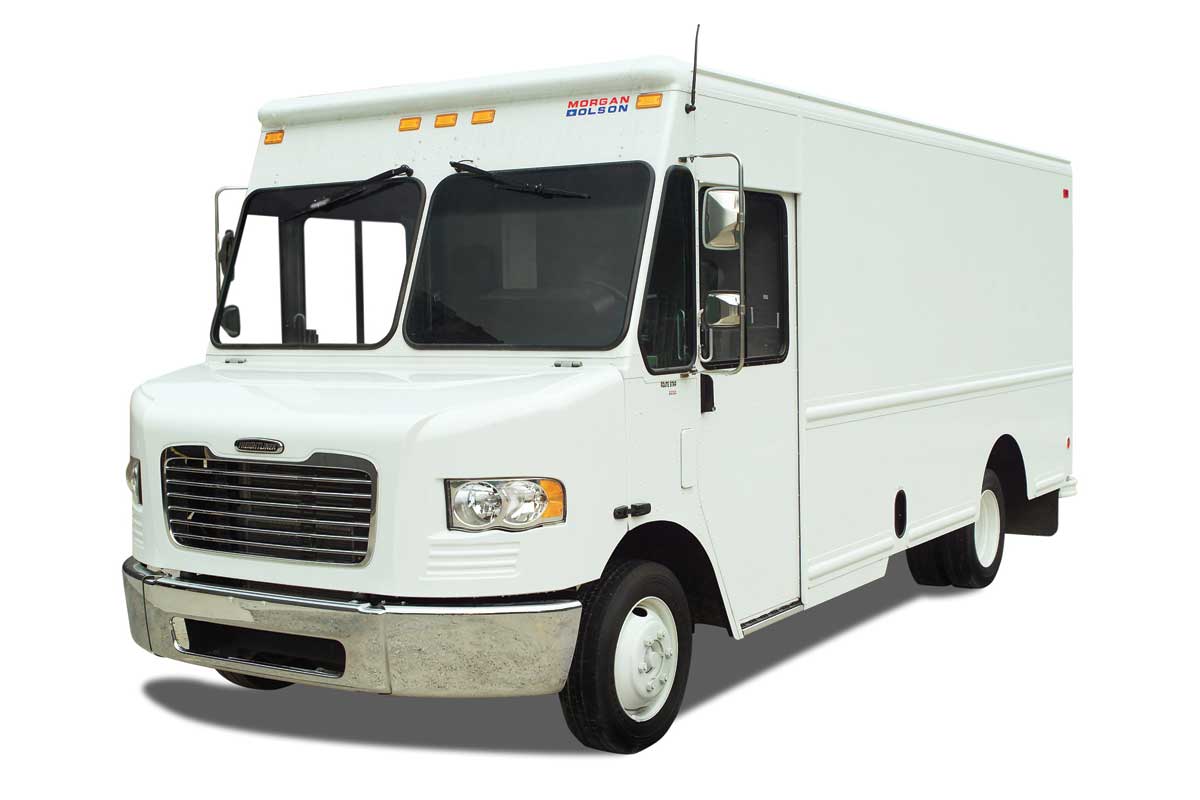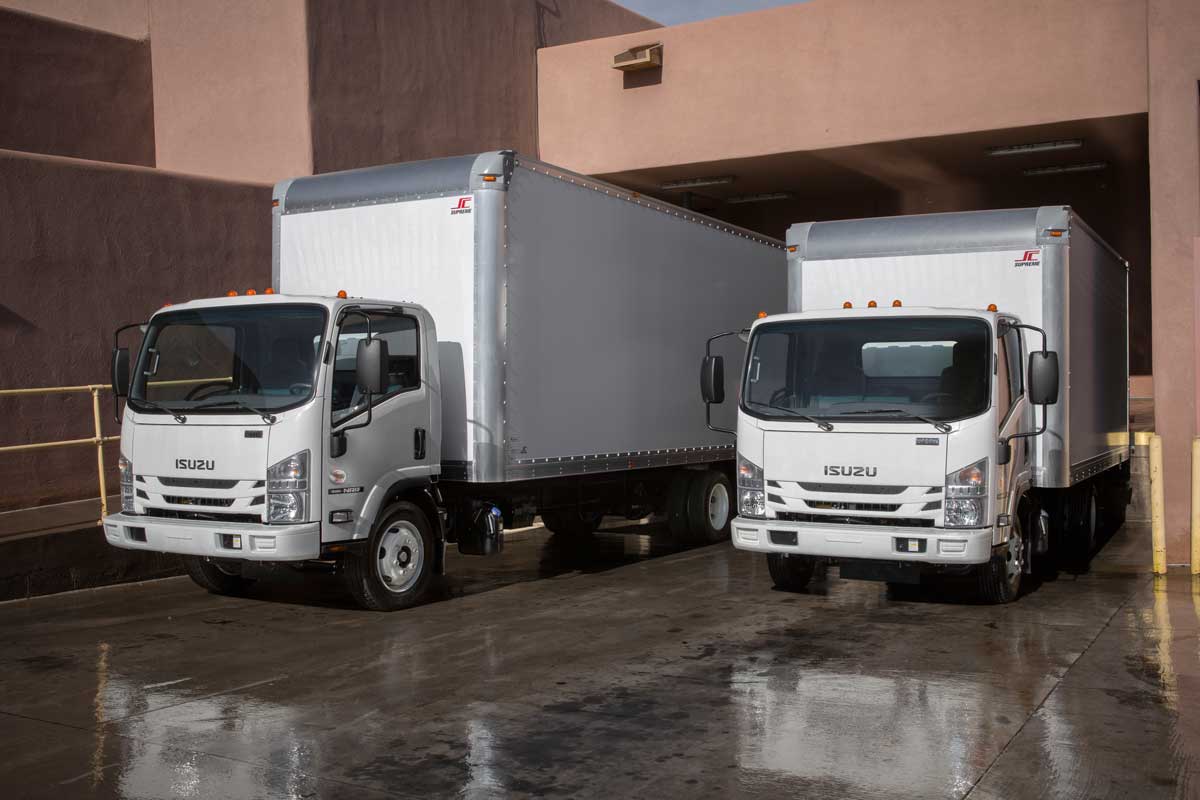It’s rare that car shopping lands on a person’s list of favorite things to do; most often, it’s on the opposite side of the spectrum. This is especially true when looking for the most affordable and efficient option, partially because of the process and partially because of the expense. The attitude doesn’t change much for baking and snack companies shopping for their commercial delivery needs.
“No company gets super excited about purchasing a vehicle. It’s an expense and a necessary evil to do their business,” said Brian Tabel, executive director of marketing, Isuzu Commercial Truck of America, Inc. “Still, they need to know what they need.”
For example, Flowers Foods, Thomasville, Ga., has 47 manufacturing facilities across the U.S.
“Our delivery needs vary greatly and often dictate the type of vehicle we use to service our customers,” said Dan Stone, senior vice-president of supply chain logistics, Flowers Foods. “We have contracts with several different third-party dedicated transport partners as well as a lesser number of common carriers for some long haul and multi-stop deliveries.”
A baking or snack company must answer these questions: What kind of route will the vehicle be driving, and how often? What kind of product will be delivered, and does it have any special considerations? How long are the bread racks, or how large are the snack packages?
“Work with dealers to ensure maximum space and loads,” Mr. Tabel noted. “Companies may need a couple different lengths or styles of trucks based on what route that vehicle is running. Some routes may require gas engine; some routes require diesel.”
A list of critical and less crucial wants and needs for a commercial truck is imperative because one thing is certain: All of these factors make a difference in a delivery vehicle decision.
Spoiled for choice
From the type of fuel to the size of the truck, the selection for commercial vehicles can be overwhelming yet beneficial and flexible for a variety of customers.
MT chassis from Freightliner Custom Chassis, a Daimler Group brand, include an option to pick a power such as gas, diesel, propane or compressed natural gas (C.N.G.). These range from 200 to 308 horsepower and come with Allison transmissions, reducing maintenance cost by up to five times, according to Bryan Henke, product marketing, Freightliner.

With a variety of vehicle choices — from Class 3 NPR (gas) with 12,000 to 18,000 gross vehicle weight rating (G.V.W.R.) to Class 4 NPR-HD (diesel) with 14,500 to 20,500 G.V.W.R. — Isuzu suggests single cab for baking and snack operations, though the company also has crew cabs.
“All Low Cab Forward designs work exceptionally well for tighter or smaller roads or loading areas and are obviously ideal for urban settings,” Mr. Tabel said. “It allows you to have a larger body on a similar footprint as you would a conventional-style vehicle. Why is that important? The biggest reason is you can carry more payload without having a longer vehicle.”
The location of the routes is another major factor.
“Many times, geography or weather conditions can determine whether we need specialized equipment; for example, mountainous terrain, snow-prone areas, hot weather or high-traffic areas,” Mr. Stone said about Flowers Foods’ routes.
City versus rural routes impacts fuel efficiency and maintenance.
“The frequency of stop-and-go city traffic can be tough on your vehicle’s engine, transmission and brakes,” Mr. Henke explained. “For rural driving, you’ll likely be covering long distances, so fuel efficiency might be a more important consideration as well as shocks for uneven roadways.”
Freightliner has MT-45 and MT-55 model trucks, which are built for versatility. The most important difference in quality is with the brakes. Standard models have hydraulic anti-lock braking systems and 15-inch Bosch pin-slide disc brakes.
A list of critical and less crucial wants and needs for a commercial truck is imperative.
“These are built to make stopping heavier loads easier with increased heat resistance and decreased brake fade and wear,” Mr. Henke said. “The standard brakes also feature a pin-slide design that reduces maintenance time.”
Enhanced models include premium 71-milimeter Walther Engineering and Manufacturing Co. quad-piston hydraulic disc brakes as well as corrosion resistant tone rings.
Trucks also offer options for a variety of product needs.
“A number of our customers have multiple temperature requirements,” Mr. Tabel said. “They need part of the truck to be frozen, part of the truck to be cold or part to be dry. Especially in hot areas such as on the West Coast, a lot of products have to maintain certain temperatures inside the truck.”
Special product considerations should be discussed with the dealer upfront.
Calculating the cost
When choosing a vehicle, the price tag is important, but the expenses after the purchase can be even more critical. Together, these calculations shed some light on if the vehicle is the real deal or if it should be a no-deal by answering this simple question: What does this vehicle really cost?
“In calculating the real cost of ownership, the sticker price is one metric of many,” Mr. Henke said. “Using third-party testing, we are able to calculate the ‘real cost’ of ownership.”
According to Freightliner, this expense includes five overall metrics that encompass other metrics: fuel efficiency; safety with braking, maneuverability, ergonomics and curbside access; the quality of design, engineering and manufacturing; uptime services and support; and fuel options with gasoline, diesel, propane and C.N.G.

Isuzu has a vehicle calculator for the long-term cost of ownership that its sales team uses every time it quotes a customer. It helps companies understand that even though one vehicle is less expensive, the cost to operate it over time, from mileage to maintenance to downtime, makes it costlier than another vehicle that has a more expensive initial price point.
There are many ways to save on delivery vehicle costs, too. Mr. Tabel said that Isuzu has fleet incentives for any business with 10 or more vehicles in operation. The company also includes resale programs for its customers. Additionally, it offers a Priority Service Maintenance Program service to decrease a customer’s cost of ownership. It includes oil changes, tire replacements, brake replacements and more.
“For businesses, maintenance costs could be a make-or-break month,” Mr. Tabel noted. “At Isuzu, they can purchase today’s pricing for years out, so they know what that vehicle is going to cost them.”
It’s not enough to go to a lot, pick and purchase the first truck that looks like it will fit product and has an affordable price on the tag. Although it’s not the most enjoyable activity for a company, there are questions regarding quantity, route, product and other needs that must be answered.
“Talking with the dealer is the most important thing you can do,” Mr. Tabel said. “Make sure you are specific in explaining your business needs to ultimately ensure you get the right truck for the right job.”





